Evolutionary genomics and phylogenetics stand at the forefront of scientific inquiry, offering profound insights into the intricate tapestry of life’s diversity, evolutionary relationships, and adaptation processes across species. In recent years, rapid advancements in technology, data analysis techniques, and interdisciplinary collaborations have revolutionized our understanding of evolution at the molecular level.
Comparative Genomics: Decoding Genetic Variation
Comparative genomics has emerged as a powerful tool for deciphering genetic variation, evolutionary patterns, and functional elements across genomes. By analyzing the similarities and differences in DNA sequences among different species, researchers can identify conserved regions, gene families, regulatory elements, and evolutionary signatures that shape biodiversity and biological complexity.
One of the key advancements in comparative genomics is the development of high throughput sequencing technologies, such as next generation sequencing (NGS) and single cell sequencing, which enable researchers to sequence entire genomes rapidly and cost effectively. This has facilitated large scale comparative studies across diverse taxa, from microbes and plants to animals and humans, unraveling genomic features underlying evolutionary processes.
Comparative genomics also encompasses phylogenomic analyses, where genomic data is used to reconstruct phylogenetic trees that depict evolutionary relationships among species. Advanced computational algorithms and statistical models aid in inferring phylogenetic trees based on DNA sequence alignments, gene orthology, synteny conservation, and evolutionary rates, providing insights into the evolutionary history and divergence times of different lineages.
Molecular Clock Analysis: Unraveling Evolutionary Timeframes
Molecular clock analysis is a cornerstone of evolutionary genomics, aiming to estimate evolutionary divergence times and evolutionary rates based on molecular data, such as DNA or protein sequences. The molecular clock hypothesis posits that genetic mutations accumulate at a relatively constant rate over time, allowing researchers to calibrate molecular clocks and infer temporal dynamics of evolutionary events.
Recent advancements in molecular clock modeling have improved accuracy and reliability in estimating divergence times between species, populations, or lineages. Bayesian inference methods, maximum likelihood approaches, and relaxed clock models accommodate complexities such as variable mutation rates, rate heterogeneity among genomic regions, and calibration uncertainties, enhancing the precision of molecular dating.
Integration of molecular clock analyses with fossil records, geological data, and biogeographic information further refines evolutionary timelines and elucidates key evolutionary transitions, speciation events, and adaptive radiations in the history of life. This interdisciplinary approach, known as “tip dating,” reconciles molecular and paleontological evidence to reconstruct evolutionary narratives with temporal resolution.
Ancestral Reconstruction Techniques: Resurrecting Ancient Genomes
Ancestral reconstruction techniques offer a glimpse into the genetic past, allowing researchers to infer ancestral genomes, ancestral traits, and evolutionary trajectories of ancestral lineages. These techniques leverage comparative genomics, phylogenetic methods, and probabilistic models to reconstruct ancestral sequences, gene content, and genomic architectures of ancestral organisms.
Probabilistic ancestral state reconstruction algorithms, such as maximum likelihood and Bayesian methods, estimate ancestral character states (e.g., nucleotide bases, amino acids, gene presence/absence) at internal nodes of phylogenetic trees. These reconstructions provide insights into genetic changes, evolutionary adaptations, and functional innovations that shaped ancestral lineages over time.
Ancient DNA (aDNA) analysis represents a groundbreaking frontier in ancestral reconstruction, enabling the study of genomes from extinct species, ancient populations, and archaeological samples. Advances in aDNA extraction, sequencing technologies (e.g., high throughput aDNA sequencing, single stranded library preparation), and bioinformatics pipelines have unlocked ancient genetic secrets, revealing past genetic diversity, population dynamics, and evolutionary responses to environmental changes.
Hardware Requirements:
High Performance Computing (HPC) Clusters:
High performance computing clusters with multiple nodes, processors (CPUs), and memory (RAM) are essential for handling large scale genomic datasets, phylogenetic analyses, and computational simulations.
Parallel processing capabilities, distributed computing frameworks, and job scheduling systems optimize computational efficiency, scalability, and throughput for complex evolutionary analyses.
Storage Infrastructure:
High capacity storage systems (e.g., network attached storage, storage area networks) are necessary for storing genomic sequences, alignment files, phylogenetic trees, and associated metadata.
Redundancy, data backup protocols, and data versioning ensure data integrity, accessibility, and disaster recovery in case of hardware failures or data corruption.
Specialized Hardware Accelerators:
Graphics Processing Units (GPUs), Field Programmable Gate Arrays (FPGAs), and other hardware accelerators are utilized for accelerating computationally intensive tasks, such as sequence alignment, phylogenetic inference, and molecular dynamics simulations.
These accelerators leverage parallel computing architectures, optimized algorithms, and hardware specific optimizations to expedite analysis pipelines and reduce processing times.
Next-Generation Sequencing (NGS) Platforms:
NGS platforms, such as Illumina, PacBio, and Oxford Nanopore sequencers, are used for generating genomic data, including whole genome sequences, transcriptomes, metagenomes, and ancient DNA.
Robust sample preparation equipment, sequencing libraries, and bioinformatics workflows are integrated with NGS platforms for high throughput sequencing, quality control, and data processing.
Laboratory Equipment:
Molecular biology instruments, including PCR machines, gel electrophoresis systems, DNA/RNA extraction kits, and sequencing consumables, support experimental workflows for sample preparation, library construction, and validation of genomic data.
Software Requirements:
Bioinformatics Tools and Pipelines:
Bioinformatics software tools and pipelines are essential for processing, analyzing, and interpreting genomic data, including sequence alignment, variant calling, genome assembly, gene prediction, and functional annotation.
Popular bioinformatics tools include BLAST, Bowtie, BWA, SAMtools, GATK, Trinity, Prokka, and tools for phylogenetic analysis (e.g., RAxML, MrBayes, BEAST).
Phylogenetic Software Suites:
Phylogenetic software suites provide tools for constructing phylogenetic trees, estimating evolutionary distances, inferring ancestral sequences, and performing molecular clock analyses.
Examples of phylogenetic software suites include PAUP*, PhyML, MEGA, IQ TREE, BEAST, and software for ancestral reconstruction (e.g., PAML, HyPhy, RevBayes).
Statistical and Computational Libraries:
Statistical software libraries (e.g., R, Python with NumPy, SciPy, pandas) are utilized for statistical analysis, data visualization, and hypothesis testing in evolutionary genomics research.
Computational libraries for machine learning (e.g., scikit learn, TensorFlow, PyTorch) enable data driven approaches, predictive modeling, and pattern recognition in evolutionary analyses.
Data Management and Visualization Tools:
Data management platforms, database systems (e.g., MySQL, PostgreSQL, MongoDB), and cloud based storage solutions facilitate data organization, integration, querying, and retrieval in evolutionary genomics projects.
Visualization tools (e.g., D3.js, Matplotlib, ggplot2) are employed for creating graphical representations of genomic data, phylogenetic trees, evolutionary networks, and population genetics analyses.
Workflow Management Platforms:
Workflow management platforms (e.g., Galaxy, Nextflow, Snakemake) streamline bioinformatics pipelines, automate data processing steps, manage computational resources, and ensure reproducibility and scalability of analyses.
Genomic Databases and Repositories:
Access to public genomic databases and repositories (e.g., NCBI GenBank, ENSEMBL, UCSC Genome Browser, TreeBASE, Dryad) provides researchers with curated genomic data, reference sequences, phylogenetic resources, and metadata for comparative analyses and data sharing.
Interactive Visualization Tools:
Interactive visualization tools and platforms (e.g., iTOL, FigTree, Archaeopteryx, Phylo.io) enable researchers to explore phylogenetic trees, annotate branches, visualize evolutionary traits, and create publication ready figures.
Machine Learning and Artificial Intelligence (AI) Tools:
Machine learning algorithms, AI frameworks (e.g., TensorFlow, Keras, PyTorch), and deep learning models are increasingly applied in evolutionary genomics for pattern recognition, evolutionary prediction, functional genomics analysis, and genotype phenotype associations.
Collaboration and Communication Platforms:
Collaboration platforms (e.g., GitHub, GitLab), project management tools, version control systems, and communication channels facilitate collaboration, code sharing, reproducibility, and transparent research practices in evolutionary genomics and phylogenetics.
Applications and Implications
The advancements in evolutionary genomics and phylogenetics have far reaching applications across diverse fields, each offering profound implications for scientific understanding, practical solutions, and societal impact:
Evolutionary Biology and Ecology:
Adaptive Evolution: Studying the genetic basis of adaptive evolution, including natural selection, genetic drift, and gene flow, enhances our understanding of how species respond to environmental changes, ecological interactions, and selective pressures.
Speciation and Divergence: Investigating speciation processes, hybridization events, and reproductive barriers provides insights into the origins of biodiversity, species radiations, and the mechanisms driving evolutionary divergence.
Ecosystem Dynamics: Unraveling evolutionary relationships among species, trophic interactions, and co evolutionary dynamics sheds light on ecosystem stability, resilience, and ecosystem service provision in natural and human altered environments.
Biodiversity Conservation and Management:
Conservation Prioritization: Identifying genetic diversity hotspots, evolutionary distinct lineages (EDLs), and endangered species using phylogenetic approaches guides conservation prioritization, habitat protection, and restoration efforts to preserve evolutionary potential and biodiversity resilience.
Population Genetics: Assessing genetic diversity, population structure, and gene flow informs conservation genetics strategies, captive breeding programs, and translocation initiatives aimed at mitigating genetic erosion, inbreeding depression, and extinction risks.
Invasive Species Management: Using phylogenetic tools to trace invasion pathways, identify source populations, and understand invasive species’ evolutionary potential supports effective invasive species management, biosecurity measures, and ecosystem restoration in invaded habitats.
Biomedical Research and Human Health:
Disease Evolution: Investigating the evolutionary origins of pathogens, host pathogen interactions, and microbial adaptation informs disease surveillance, outbreak prediction, and public health interventions, including vaccine development, antimicrobial resistance monitoring, and zoonotic disease control.
Human Evolutionary History: Studying human evolutionary genomics, ancient DNA, and population genetics elucidates human origins, migration patterns, genetic diversity, and demographic history, offering insights into human evolution, ancestry, and genetic adaptations to diverse environments.
Precision Medicine: Integrating evolutionary genomics into precision medicine approaches enables personalized diagnostics, targeted therapies, and pharmacogenomics for improving treatment outcomes, disease prevention, and healthcare decision making tailored to individual genetic variability.
Agriculture, Biotechnology, and Environmental Sustainability:
Crop Improvement: Leveraging genomic tools, evolutionary analyses, and breeding strategies enhances crop resilience, productivity, and adaptation to climate change, pests, and diseases, supporting sustainable agriculture, food security, and global food systems resilience.
Bioremediation and Bioprospecting: Exploring microbial genomics, metabolic pathways, and evolutionary adaptations in extremophiles and environmental microorganisms guides bioremediation strategies, bioprospecting for novel bioresources, and sustainable biotechnological applications in waste management, bioenergy production, and ecosystem restoration.
Climate Change Adaptation: Understanding genetic diversity, adaptive traits, and evolutionary responses in natural populations aids climate change adaptation strategies, conservation planning, and ecosystem based approaches to mitigate biodiversity loss, habitat fragmentation, and ecosystem degradation under changing environmental conditions.
Anthropology, Archaeology, and Cultural Heritage:
Ancient DNA Insights: Integrating ancient DNA analyses, isotopic studies, and archaeological data elucidates human prehistory, migrations, cultural exchanges, and population interactions, contributing to the reconstruction of ancient societies, cultural evolution, and heritage preservation.
Ancestral Health: Investigating ancestral genomes, genetic adaptations, and evolutionary legacies in human populations informs ancestral health research, personalized nutrition, and lifestyle interventions aligned with human evolutionary biology, metabolic pathways, and disease risk factors.
Cultural Evolution: Examining cultural evolution, social behaviors, and technological innovations through an evolutionary lens enhances our understanding of cultural diversity, innovation diffusion, and cultural change mechanisms across human societies and historical periods.
These applications and implications highlight the transformative potential of evolutionary genomics and phylogenetics in advancing scientific knowledge, addressing global challenges, and fostering interdisciplinary collaborations for sustainable development, conservation stewardship, and human well being. Embracing evolutionary perspectives in research, education, policy making, and public engagement fosters a deeper appreciation of life’s interconnectedness, evolutionary heritage, and shared responsibilities towards the planet’s biological diversity and evolutionary legacy.
Challenges and Future Directions
Despite remarkable progress, challenges persist in evolutionary genomics and phylogenetics, including:
Data Integration: Integrating diverse data sources (genomic, phenotypic, environmental) and developing robust analytical frameworks for multi omics integration in evolutionary studies.
Computational Resources: Addressing computational challenges (e.g., scalability, algorithmic complexity) associated with big data analysis, phylogenetic inference, and ancestral reconstruction on large datasets.
Data Quality and Bias: Mitigating biases (e.g., sampling bias, sequence errors, missing data) in genomic datasets, phylogenetic signal interpretation, and ancestral state estimation for accurate evolutionary insights.
Interdisciplinary Collaboration: Fostering collaborations between biologists, computer scientists, statisticians, and domain experts to advance methodological innovations, tool development, and data sharing in evolutionary research.
Ethical Considerations: Addressing ethical issues (e.g., data privacy, genetic discrimination, cultural sensitivities) in ancient DNA research, population genomics, and evolutionary studies involving human subjects or indigenous communities.
Looking ahead, the future of evolutionary genomics and phylogenetics holds exciting prospects, including:
- Advancements in single cell genomics, metagenomics, and spatial transcriptomics for studying microbial evolution, symbiosis, and microbial community dynamics.
- Integration of genomic data with ecological niche modeling, environmental data, and geospatial analyses to explore evolutionary responses to global change, habitat fragmentation, and biodiversity loss.
- Development of machine learning algorithms, deep learning models, and network based approaches for predicting evolutionary trajectories, functional genomics annotation, and genotype phenotype associations.
- Expansion of ancient DNA research to non model organisms, extinct megafauna, and ancient ecosystems, unlocking ancient genetic adaptations, ecological interactions, and evolutionary legacies.
Ethical frameworks, open science initiatives, and responsible data practices to ensure transparency, reproducibility, and equitable access to genomic data, tools, and research outcomes.
In conclusion, the ongoing advancements in evolutionary genomics and phylogenetics are reshaping our understanding of evolution, biodiversity, and the interconnectedness of life forms on Earth. By embracing interdisciplinary collaborations, technological innovations, and ethical considerations, researchers are poised to unlock new frontiers in evolutionary biology, conservation science, and human history, paving the way for a deeper appreciation of life’s evolutionary journey.



